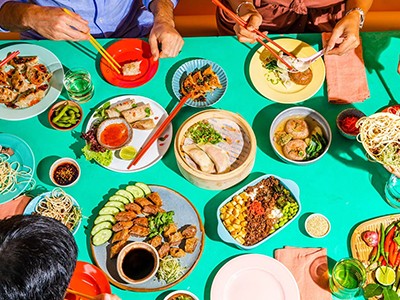Are you what you eat? How food shapes self-image


For painter Giuseppe Arcimboldo in Vertumnus (1591), emperor Rudolf II was what he ate.Credit: Giuseppe Arcimboldo/Buyenlarge/Getty
Eating and Being: A History of Ideas about Our Food and Ourselves Steven Shapin Univ. Chicago Press (2024)
In seventeenth-century England, people often commented after a meal: “We ourselves have had ourselves upon our trenchers”. This is an early version of today’s well-worn aphorism, ‘you are what you eat’. In Eating and Being, historian Steven Shapin explores this idea and how philosophies of food have shaped the Western sense of self. His central idea is encapsulated in the book’s last lines: “In the past, knowledge about what we eat belonged to knowledge about who we are. It still does.”
Is it really a sin if it’s hardwired in? The neurological basis for ‘bad’ behaviour
The opening chapters recount how ancient Greek Hippocratic ideas about food and medicine laid the foundations for the Western understanding of food and identity. This philosophy of dietetics proved remarkably tenacious, providing the basis for medical thinking into the eighteenth century.
Dietetics gave an account of how food formed not only the substance of the body, but also the psyche. A person’s temperament was determined by the balance of the four bodily humours: blood, phlegm and black and yellow bile. The balance of these fluids in individuals determined their personality types — phlegmatic, sanguinary, melancholic and choleric.
It also provided a set of principles to live by. An ideal state could be achieved by following a regimen of moderation in all areas of life: habitat, exercise, sleep, bodily excretions, the emotions and, especially, food and drink.
Mind and body
Thus far, Eating and Being seems to cover old ground. But Shapin’s ambition is greater than a retelling of dietetic principles. His purpose is to uncover the history of food as a building block of both body and mind: the history of food as a ‘self-making’ substance. Interested in continuities as much as change, he traces the history of dietetics to reveal that modern practices of self-making are deeply rooted in the silt of the past.
Grounded in the idea that the senses can detect the qualities of foods, dietetic principles were accessible to everyone. Thus, everyone was expected to be their own physician: to have sufficient self-knowledge and good-enough taste to choose foods with qualities that complemented their temperament. Thus, a phlegmatic (with an excess of cold, moist phlegm) might avoid cold, moist cucumbers but seek out hot onions, which a choleric (with an excess of hot, dry yellow bile) would eschew.
In Asia, alternative proteins are the new clean energy
William Shakespeare’s plays make clear to a modern audience what was obvious to the playwright’s contemporaries, that comestibles acted on the substance of the body to produce personality. In Henry IV Part 2 (1600), Falstaff gives an eloquent account of how a good sherry dries the brain, clearing it of cloudy vapours, resulting in a quickening of thoughts that are then expressed in witty repartee.
Dietetic thinking was how people placed themselves and others in the world, using it to sort everyone into types and predict how they might behave. The ingestion of particular qualities from foods was thought to transform a person’s moral being. It would have made sense to Shakespeare’s audience that Petruchio in The Taming of the Shrew (1623) withheld meat from his choleric bride — the titular shrew — in an attempt to reshape her into a pliant wife.
Culinary constituents
Shapin tracks the making of the modern self by tracing how conventional dietetic thought was overlaid by scientific conceptualizations of the natural world. The seventeenth-century turn towards mechanics undermined dietetics. Rather than having inherent qualities, foods were now conceived as being made up of microparticles. It was difficult to imagine how these might determine personality. But humoral patterns of thought lived on in ascriptions of different temperaments to the body’s muscular, vascular, lymphatic and nervous systems. The melancholic was relabelled as nervous, the phlegmatic as lymphatic.
Chemistry was central to the re-conceptualization of foodstuffs and their self-making properties. At first, the chemical vocabulary of acid, alkaline and salts was shared by scientists and laypeople, and the sensory qualities of salt, sweet, bitter and acid were used as alternatives to the humoral qualities of hot, cold, moist and dry. But over the nineteenth century, chemists moved the understanding of food into the sphere of scientists as they identified proteins, fats, carbohydrates, minerals and vitamins as the building blocks of food and bodies.

Advertisements for healthy eating from the early twentieth century.Credit: Iconographic Archive/Alamy (Top), Swim Ink 2 LLC/Corbis via Getty (Middle), David Pollack/Corbis via Getty (Bottom)
The stomach was revisualized as a laboratory rather than a kitchen, in which chemical reactions broke food down into its constituents. It was recognized that food generated heat inside the body and, around the 1890s, scientists began to use the calorie as a measure of food’s energy value. This was a “power” that all foods shared, making them interchangeable.
Balance was reconceived as not a product of the choice of appropriate foods, but a metabolic see-saw of energy in and energy out. In the chemical world, the individual — unable to use taste to discern food’s constituents and calories — was no longer the best judge of what was good for them.







